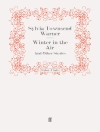Virginia Woolf’s ‘Freshwater’ is a pioneering one-act play that intricately explores themes of gender, identity, and the fluidity of artistic creation. Composed in 1935, the play is a semi-autobiographical reflection on Woolf’s connection to the influential Bloomsbury Group, combining elements of humor with a poignant critique of societal constraints on women’s creativity. The work exemplifies Woolf’s distinctive literary style, characterized by experimental prose and psychological depth, effectively blurring the lines between reality and theatricality as it interrogates the role of the artist in a patriarchal society. Woolf, born into a prominent intellectual family, experienced firsthand the limitations placed on women in her time, which profoundly influenced her literary output. The encouragement from her literary circle, alongside her own experiences, inspired Woolf to create complex female characters that challenge traditional narratives. ‘Freshwater’ serves as both homage and critique of notable figures and artistic conventions, demonstrating her belief in the necessity of female voices and perspectives in the literary canon. I wholeheartedly recommend ‘Freshwater’ to those interested in feminist literature, as well as anyone invested in the exploration of identity and creativity. Woolf’s wit and insight make this play not only a remarkable artistic endeavor but also a thought-provoking examination of the societal forces that shape artistic expression.
Tentang Penulis
Virginia Woolf (1882–1941) stands as a central figure in 20th-century modernist literature, renowned for her experimental narrative techniques and psychological depth. Woolf was born into an affluent English family, which allowed her a comprehensive education and access to her father’s extensive library. Her literary career commenced within the blooms of the Bloomsbury Group, an intellectual circle that championed artistic innovation. Woolf’s oeuvre traverses genres, including novels, essays, and plays. ‘Freshwater, ‘ a less frequently discussed yet luminary piece, manifests her playful side through its satirical edge and comedic elements, diverging from her more well-known introspective novels such as ‘Mrs. Dalloway’ (1925) and ‘To the Lighthouse’ (1927). Her signature stream-of-consciousness technique revolutionized narrative form and prose style, infusing her work with a rich inner life that mirrored her contemplations on existence, gender roles, and the fluidity of time. Despite suffering from mental illness, Woolf’s prolific writings cement her as a pioneer for feminist critique and a shaper of modernist aesthetics. Her work remains integral to English literary curricula and continues to elicit scholarly discourse on topics of identity, consciousness, and artistic expression.












